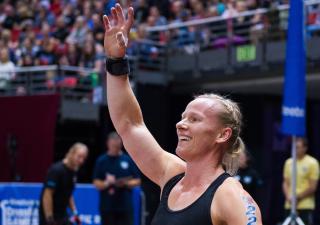EVENT 1: ROW, DU, RUN.
In my mind, this was Helen’s best event of the weekend. Note I’m not defining ‘best’ as ‘highest finish. I’m defining ‘best’ as her ability to execute on the plan and exceed our expectations. In this case, the event was her lowest finish on the leaderboard, and yet still her best.
This was a danger event (because we had it pegged as potentially a low finish) while still being very low pressure (because of our expectations). Tells you something about the benefits of minimising pressure! Helen executed perfectly. The row was a non-event. The DU were the best I’ve ever seen her do for this many reps (she sometimes struggles with consistency of this movement under fatigue). And the run was executed perfectly and to the absolute best of her abilities.
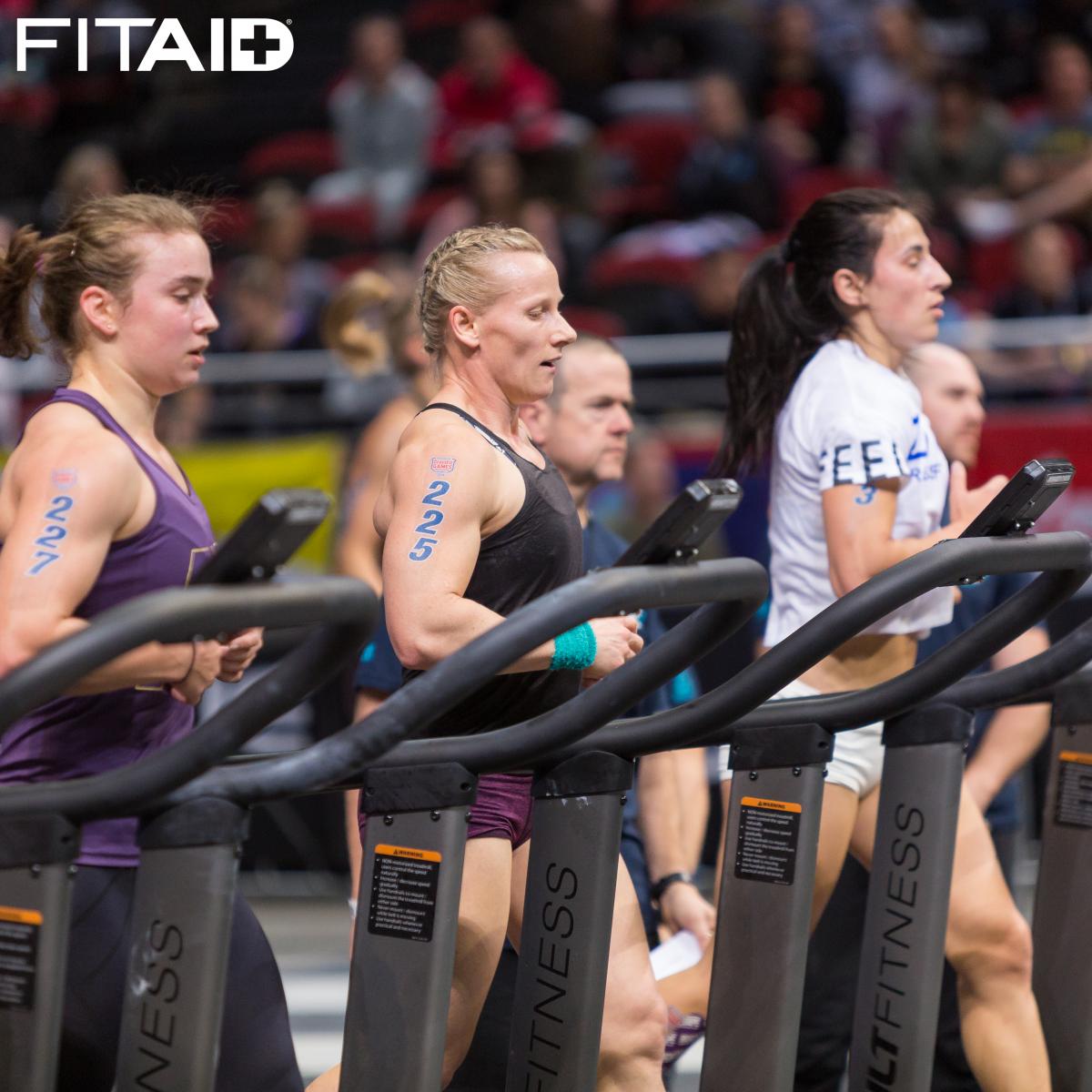
 EVENT 2: LINDA.
EVENT 2: LINDA.
We’d been looking forward to this one. We measure success by the ability to execute on the plan (be it plan A, B or C) UNDER THE GIVEN CIRCUMSTANCES. If we measured success purely on potential, we’d have chalked this one up as an underperformance.
We’d worked hard on Helen’s bench press after the event release (not something we normally do due to a tendency to aggravate an old shoulder injury) and it had improved massively. Practicing the full event in training indicated we’d be able to do the bench in threes and fours. As it turned out, from the set of eight onwards it was much less than that.
But remember, we consider performance under the given circumstances. The Regionals floor is different to anywhere else. It’s got an intangible ‘X factor’ that can derail even the best plans. Mid event, we dropped back to plan B, then C.
Helens deadlifts, cleans, and transitions were faultless. Her bench press were the absolute best she had on the day. You can’t predict when the ‘Regionals effect’ will strike, and Helen’s ability to adapt, overcome, and roll with the punches, made this event a great success.
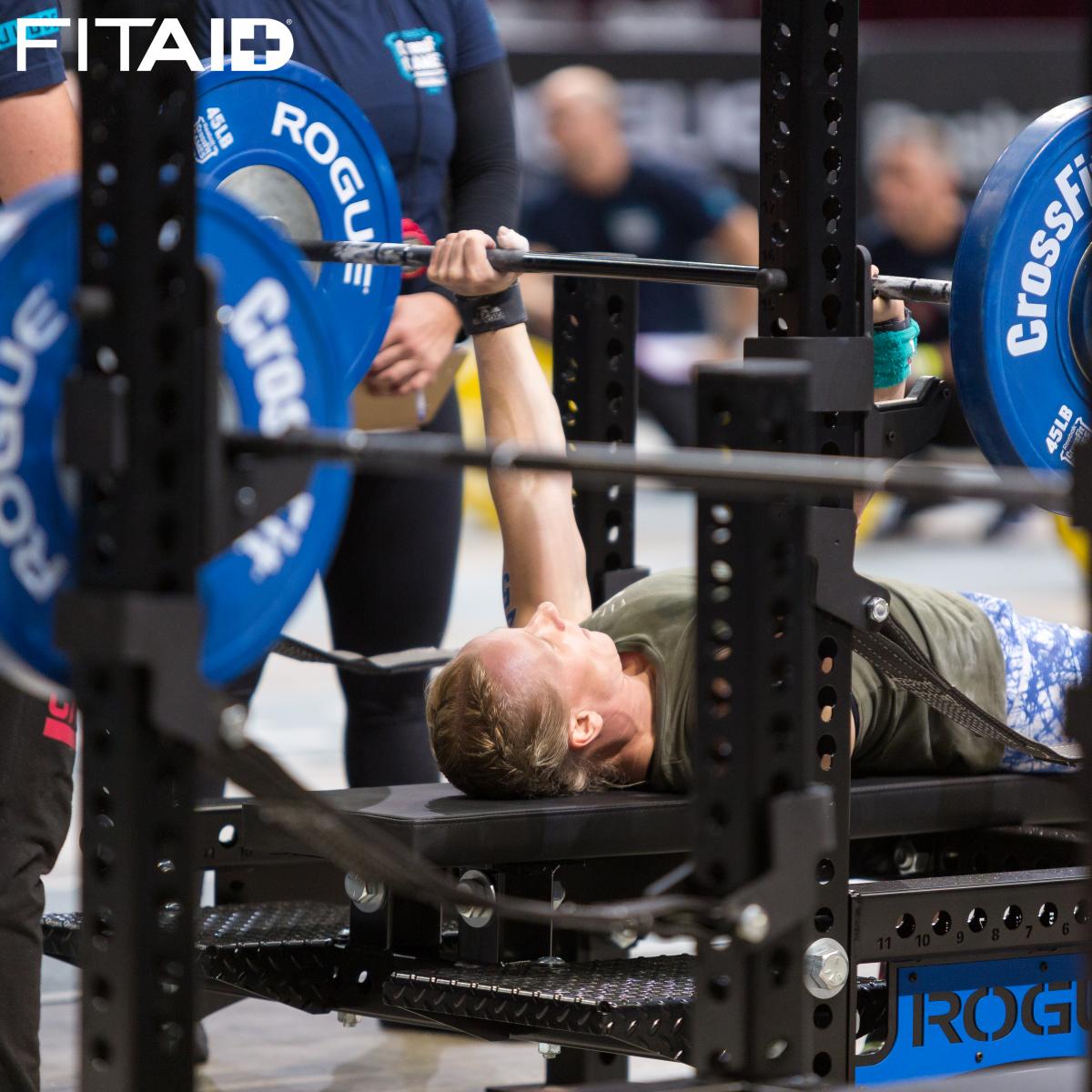
 EVENT 3: MU, HS WALK, PISTOLS.
EVENT 3: MU, HS WALK, PISTOLS.
Leading up to Regionals, this was the event Helen was most looking forward to. Her muscle-ups were great and we were very confident with our strategy there. The pistols were the least important part, not something we’re able to train (her knees have limited mileage which we have to save for running and heavy squats), but something she’s shown she can excel in based on previous Regionals.
The handstand obstacle walking was the keystone. I can’t count how many times Helen did this obstacle in the three weeks leading up to the competition. I programmed it six days a week for three weeks. The total number of successful reps was well into the triple figures. High return, low risk.
Pacing this was a tightrope. Rest too much and lose ground. Don’t rest enough and fail reps. Failed reps here are costly. Really costly. Not only do you lose the time it took you to fail the rep (which could be up to 20 seconds because of the length of each rep), but you then also have to rest longer than you usually would, because a failed rep indicates you’re hitting fatigue (and maybe didn’t rest long enough on the previous rep). Add to that the extra fatigue from having to complete the extra work. Each missed rep on the handstand walk could easily add a minute to your total time.
Helen missed three. Not terrible, but not ideal. On one of these she lost balance, twice she caught her hand on the steps. Don’t get me wrong, she smashed this event. Split second moments in time that make a big difference. She wasn’t alone. Everyone made mistakes.
To Helen’s credit, she responded impeccably, not letting this event damage her confidence or focus on the subsequent events even an iota.

 EVENT 4: SNATCHES AND BURPEES.
EVENT 4: SNATCHES AND BURPEES.
This event was executed to 99% perfection. I really enjoyed watching this. We had a good plan. We’d practiced this one many times in training because it was a way to not only practice the event, but also to source her cardiorespiratory conditioning which wasn’t present in a lot of the other skill development we were doing for that event. A smart and measured first half, then go for in the second half.
As I watched Helen finish the first half within a rep of three other girls I knew she’d win the heat. She’d paced it masterfully. Sure, she’s uber fit, but this was a real credit to how far she’s come as a smart, intelligent athlete.
Helen demolished the heat, and finished this event in third overall – behind the top two podium finishers from the 2017 CrossFit Games. And non of her signature gymnastic movements in sight. I was super proud. This was probably the most elite I’ve ever seen her perform on this big a stage. This was the Helen I’ve caught glimpses of day-in and day-out in training for years.
Postscript: You’ll remember I said 99% perfection? The plan was for her to jump the last two sets of burpees (24 reps). In 18 of these 24 reps there was a TINY almost unperceivable step. No one would have noticed except Helen and I. But it was there. This is a minute detail, and I’m being really nitpicky even mentioning it. It probably cost her three to four seconds over the event. In the end it didn’t change her position on the scoreboard – but it was the only thing keeping this event from being 100% perfection.
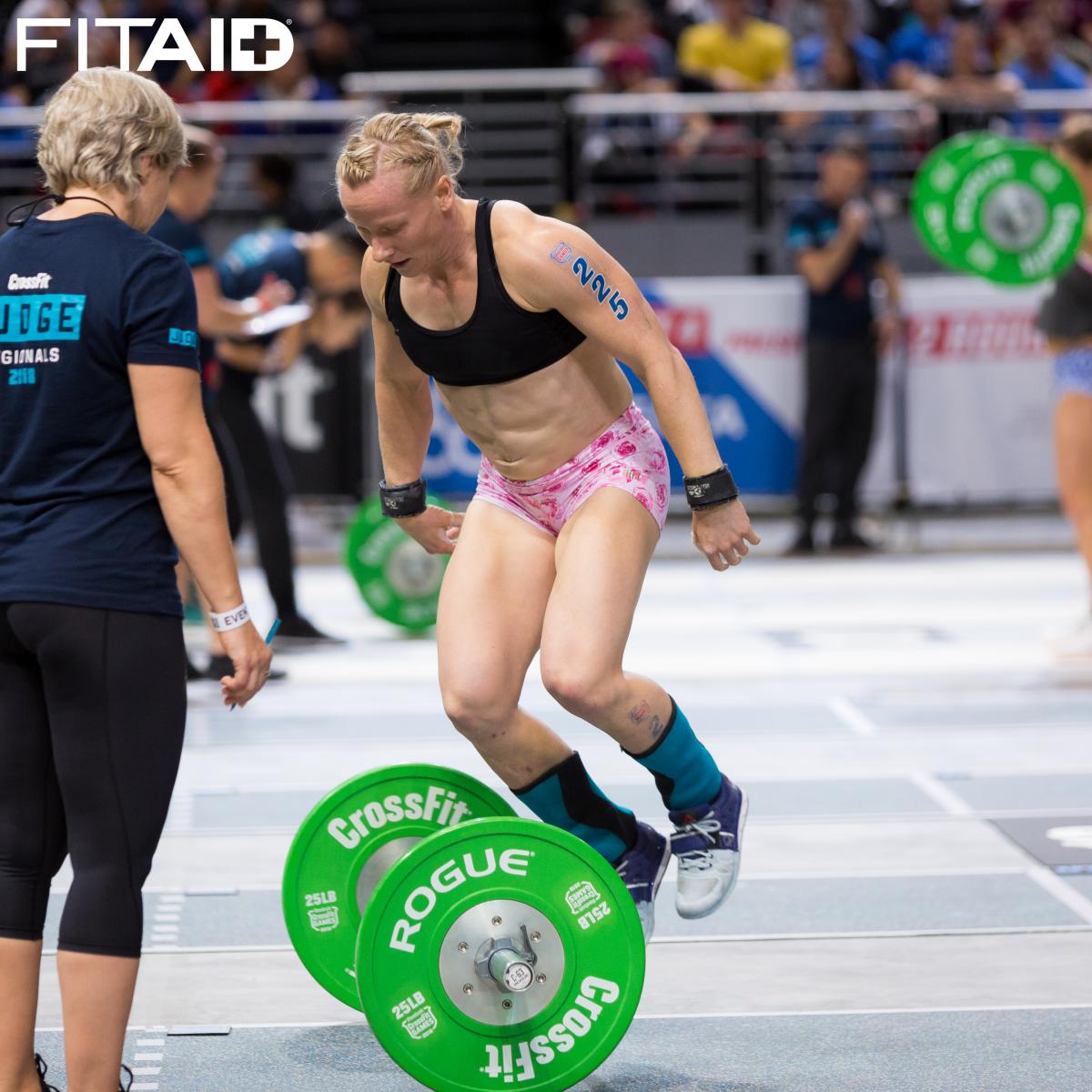
 EVENT 5: CHIPPER.
EVENT 5: CHIPPER.
Another danger event. Also (as a reward for two days of success) an opportunity to compete in the top heat.
The HSPU and TTB are Helen’s jam. We knew they’d be something special. Because there was such low interference between these two movements and the rest of the event, we knew we could attack them with aggression. As planned, Helen went unbroken on the 50 HSPU, resting three times on her head. She was first to the toes to bar by some margin. She broke the TTB four times as planned and by bike had extended her lead. The on-field commentator announced she was 20 seconds ahead of the event world record split.
The crowd got excited. Helen and I were more reserved!
The bike, step-overs and lunges were a weakness. Training for this event had been mixed. We’d tried a few different paces for the bike, and had settled on a conservative approach. Sure, this would be punishing when compared to her competitors (more-so because the calories reward high output and punish pacing), but we knew the only way to survive the step overs was to preserve the legs and the lungs.
The plan worked. She got passed by most of the field on the bike, but by the end of the step-overs, she was ahead of the only competitor that mattered, her ‘training avatar’. Herself.
The step-overs had been a major bottleneck in training. We’d developed a kipping/swinging technique that had helped, but even with this, 30s rests in training were common.
In training, this had become as much (if not more) of a mental battle than a physical one. Staying away from excessive pain here was the only way through, and it worked well. The lunges were ok. A few more breaks than we’d planned but hey, this was Regionals. It’s hard work. Our pacing and strategy got the best possible result out of Helen. Leaderboard placing was irrelevant (though higher than we were expecting) – effort and execution were on point.
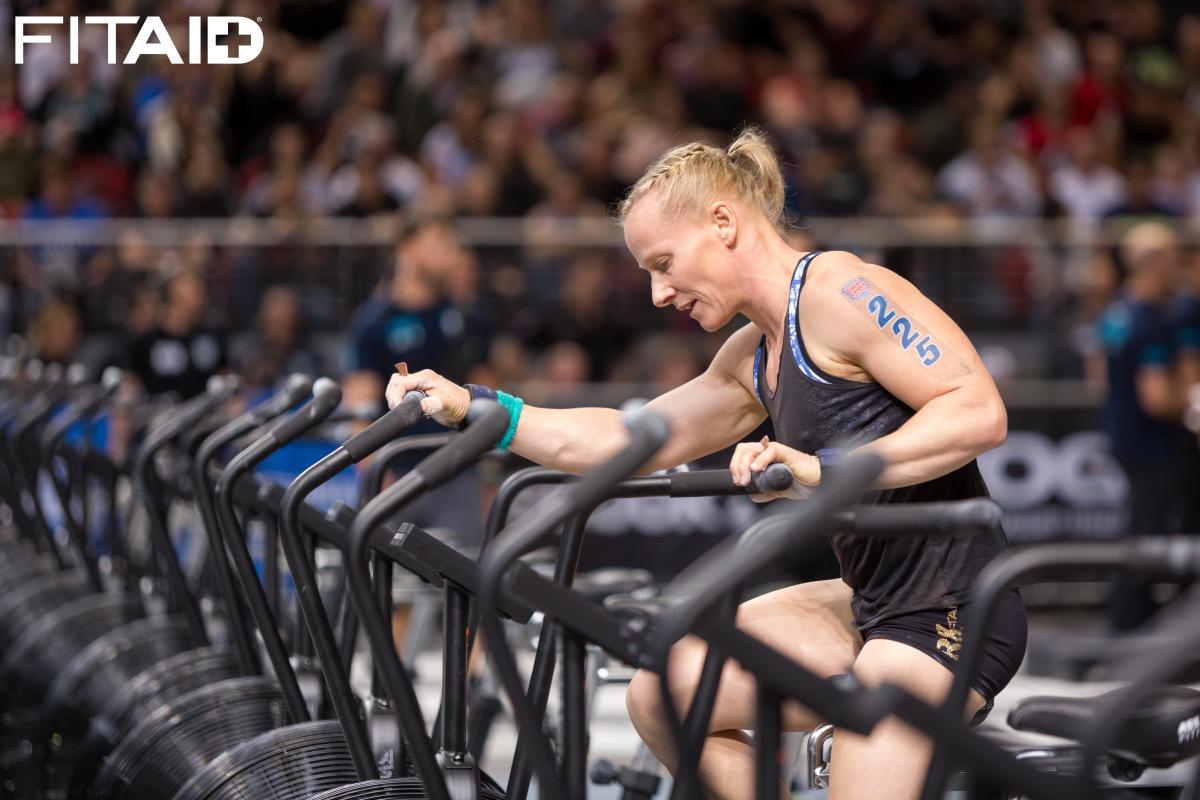
 EVENT 6: ROPE CLIMBS AND THRUSTERS.
EVENT 6: ROPE CLIMBS AND THRUSTERS.
This didn’t go exactly to plan – and I loved every second! Helen and I don’t often take risks with our strategy. But for this event we did.
This would almost certainly be Helen’s final individual event on the Regionals floor. And we wanted to go out all guns blazing. No questions left unanswered. No ‘what if’. No ‘I wonder if I could have…’. Our theme for this event was to go out in a BLAZE OF GLORY.
Helen’s developed a really efficient technique for the short rope climbs. It’s not particularly fast, but it’s very efficient and very consistent. With nine reps on the short rope, we thought we may give up a bit of time, but not too much. And either way, it’s the fastest technique she’s got for that many reps. The rope climbs were a constant, and she executed on them as she’d trained to.
The thrusters were the variable. She’d done them unbroken (16, 12, 8) in training (when we thought it was done with the full length rope). She’d also done them by breaking the 16 and 12 in half. But remember, ‘blaze of glory’. We decided to break the first set (8 reps, drop the bar to roll it forward into the next section). Then go unbroken on the rest.
This event was probably the one I was most nervous/excited/anxious about as I sat in the stands waiting for the event to start. We were taking a risk. Seldom charted water.
Four rope climbs executed beautifully. 8+8 thrusters. Another three beautiful rope climbs.
Now the event really began. A bunch of girls got to the 12 thrusters within a few second of each other. This was a watershed. To understand the next 30 seconds, let’s go back to the warm-up area. I’d told Helen to remove any consideration from her mind that she’d break these thrusters. If you ‘wait to see how you feel’, you’re likely to take the easy option – the rest. We removed the option to make a decision. We made the decision before the pain. We put the decision in the hands of the ‘human’ part of her brain, and removed it from the ‘chimp’ part (this is a reference to a book ‘The Chimp Paradox’ which Helen and I both read in the lead up to Regionals, and which really helped to improve our understanding of each others minds and really helped the communication in our athlete/coach relationship).
I was on my feet screaming ‘unbroken, hold on, HOLD ON’. She finished the six reps, then… bar held aloft… took a step forward. For me the rest of the event was inconsequential. This exact moment in time (for me at least) was her farewell tour. I pumped the air. I was fucking proud. No questions left to ask. Guns blazing. What happened next didn’t, doesn’t and never will matter. For the record, she destroyed it. A blaze of glory. But I wouldn’t have cared either way. At what may well be the final moment of her individual career, she’d arrived.

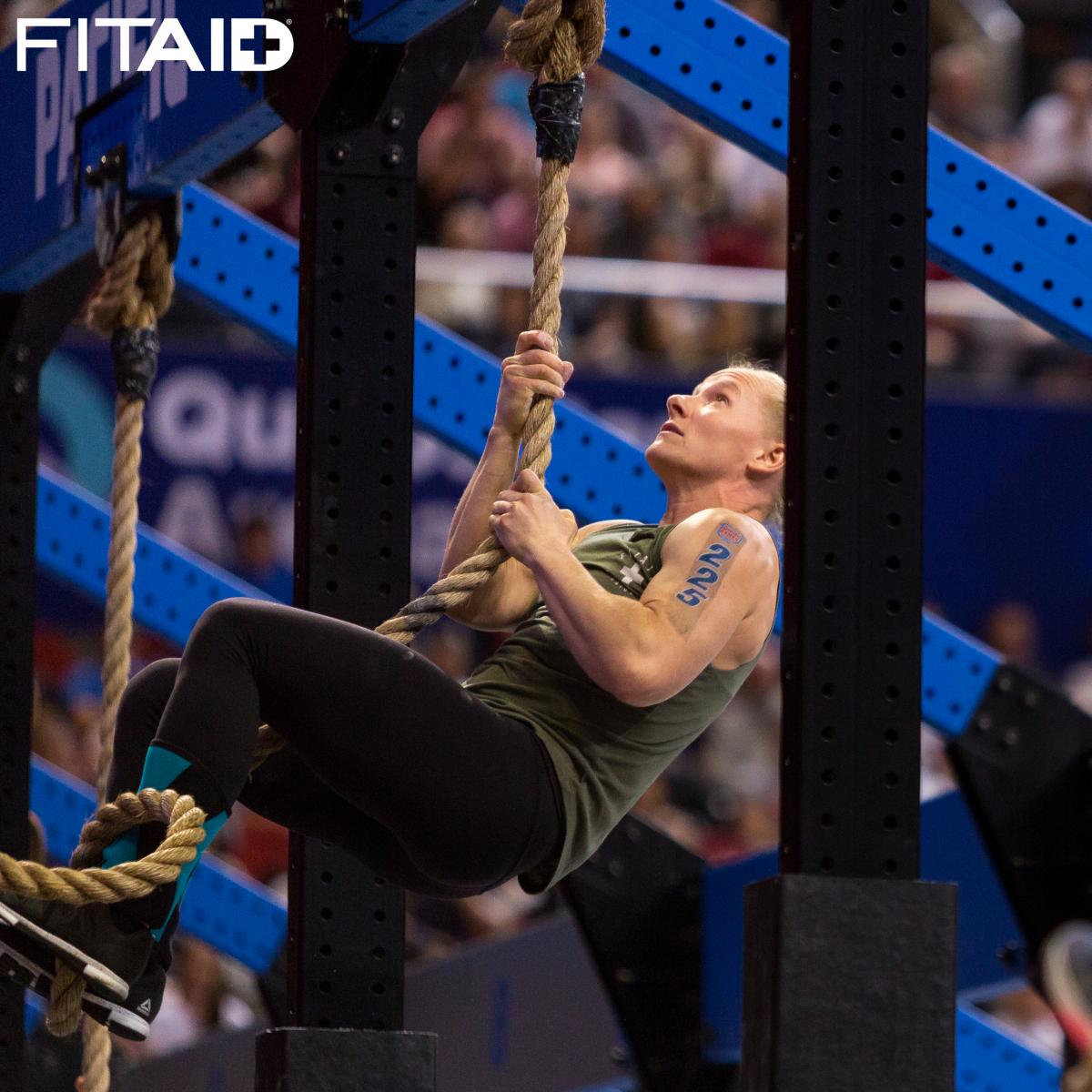
Photo Credit: FitAid Australia

